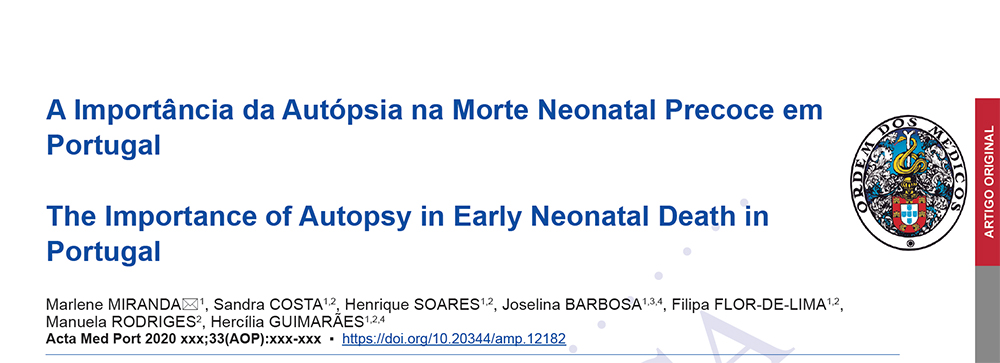SOCIAL MEDIA
Portuguese Medical Association's Scientific Journal

Introduction: The early neonatal period is the most critical for the newborn’s life. The autopsy is important to understand the cause of death, and find other diagnoses not clinically identified. However, the rate of neonatal autopsy is declining worldwide. This study aims to characterize early neonatal death and the clinical importance of the autopsy, evaluating the concordance between clinical and pathological diagnosis.
Material and Methods: Retrospective study of the clinical records of all neonates admitted to a level III Neonatal Intensive Care unit in Portugal who died during the first week of life in 10 consecutive years (2008 – 2017). In order to classify the concordance found between clinical and pathological diagnoses, the modified Goldman classification was used.
Results: During the first week of life, 76 newborns died. The main causes of death were complications related with prematurity and congenital malformations. The autopsy was performed in 50 newborns. Additional findings were found in 62% of the cases, and in 12% findings with important implications for genetic counseling of future pregnancies. There was concordance between the clinical and pathological findings in 38% of cases.
Discussion: An autopsy was performed more frequently in newborns with greater gestational age. The number of additional diagnoses found at autopsy, including diagnoses with implications for genetic counseling, confirm the importance of performing them.
Conclusion: An autopsy should be proposed to all parents after early neonatal death, given its importance in clarifying the cause of death.